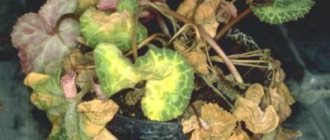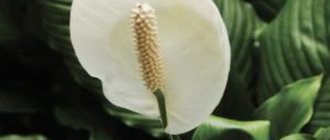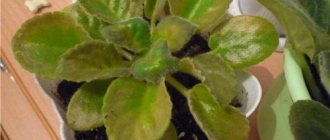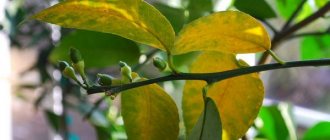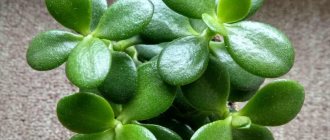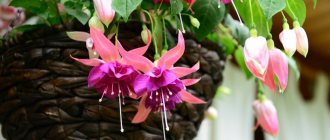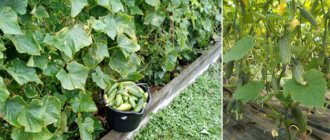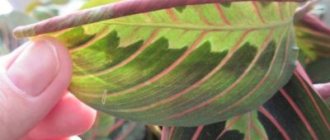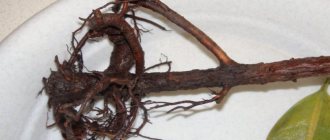When the leaves of strawberries, tomatoes, cucumbers or other crops turn yellow, the summer resident begins to panic: the plants die, the harvest is lost, all his work is in vain! We suggest you leave your emotions aside for a while and figure out what could be causing the yellowing of the leaves and decide what to do in such a situation.
We discussed the yellow leaves of cucumbers in detail here, the yellowing of tomato tops due to a lack of minerals - here, and today we will try to find out why the leaves of strawberries turn yellow.
Yellowing of strawberry leaves (scientifically this problem is called chlorosis) can be caused by a number of reasons: pests or diseases, violation of agricultural practices, lack or excess of fertilizers. It also happens that several reasons overlap each other, and it is not immediately possible to eliminate the problem forever.
So why do strawberries have yellow leaves?
Reason one: direct rays of the sun
Direct sunlight burns strawberry leaves, causing them to yellow and then dry out. Young, fragile bushes and old plants of the last year especially suffer from excess sun. The solution to this problem is simple: arrange the strawberry beds so that they are exposed to both sun and shade during the day. You can create light shading using mixed plantings, for example, planting onions next to strawberries.
Disease treatment and pest control
Zucchini leaves turn yellow: what to do
Let's consider the basic agronomic requirements that must be met when yellowing leaves appear:
- To provide the soil under the bush with nitrogen, when planting in holes it is necessary to add humus, and in the spring it is necessary to add nitrogen fortified complexes. It is necessary to observe the measure, otherwise it will lead to an increase in green mass, rather than inflorescences and fruits.
Chlorosis
- The crop often suffers from a lack of magnesium in acidified soils. Dolomite flour will reduce acidity and enrich the soil with a chemical element. It is necessary to fertilize the soil with magnesium at intervals of 2 weeks. Foliar feeding with iron can be done using any preparations containing iron.
- To treat diseases such as marginal yellowing and mosaic, it is necessary to promptly and regularly destroy vectors, as well as use high-quality seedlings.
- If aphids are found in the beds, it is necessary to urgently take measures to eliminate them. During flowering and fruiting, when the use of chemicals is contraindicated, aphids are collected by hand. After harvesting, strawberry bushes can be treated with a soap solution with the addition of tobacco dust, garlic infusion and vegetable oil. To achieve maximum results, it is recommended to alternate folk remedies with chemical ones.
- In case of severe damage by viruses/pathogenic bacteria and parasites, it is necessary to replace all planting material, and the affected bushes must be completely collected and burned.
Chlorosis
- It is necessary to water the crop not only during flowering, but also during the entire growing season. In dry and hot weather, it is necessary to organize abundant watering, which should occur periodically - at least once every seven days.
Reason two: mineral deficiency
A very common reason in our gardens. Most often, it occurs due to non-compliance with the rules of crop rotation, when a strawberry bed is planted where predecessors unsuitable for this berry previously grew. For example, you should not plant strawberries and wild strawberries after nightshades: peppers, tomatoes, potatoes, eggplants - they pull a lot of nutrients from the soil, and strawberries are also demanding on nutrition. Strawberries grow best after cereal green manures, legumes, herbs, garlic, onions, carrots and radishes.
Magnesium deficiency
Magnesium deficiency is more common than others. It is characterized by a change in the color of old leaves. They become yellow and sometimes brown with a purple tint. Here we call for the help of fertilizing: 15 grams of magnesium sulfate per 10 liters of water or 20-25 grams of dry granules of the same fertilizer per square meter. We carry out two feedings at weekly intervals.
Nitrogen deficiency
Sometimes strawberry leaves turn yellow due to lack of nitrogen. This problem occurs in the spring, when it is difficult for the roots to get enough nitrogen from the still unheated soil. Then the leaves become yellowish, and in particularly advanced cases they acquire a lemon color. In this case, the bushes need to be fed with ammonium nitrate - 25-30 grams of fertilizer per 10 liters of water.
Boron deficiency
A lack of boron can cause leaves to turn yellow.
In addition, with boron deficiency, flowers become smaller, and the fruits become defective and somehow twisted. To help the summer resident, it is proposed to spray strawberry bushes with boric acid. As we wrote in the article about fertilizing strawberries: – there are two options for fertilizing with boric acid (per 10 liters of water):
- 30 drops of iodine, 1 teaspoon of boric acid, 1 glass of ash;
- 3 grams of potassium permanganate, 0.5 tsp. boric acid, 1 tbsp. urea and 0.5 cups of ash.
Iron deficiency
Sometimes strawberries experience iron deficiency, which is manifested by a characteristic yellowing of young leaves between the veins.
This usually happens on super-alkaline calcareous soils.
Iron chlorosis is eliminated with iron preparations: Ferrovit, Ferrylene, Micro-Fe, Micom-Reacom Iron Chelate. It is also recommended to pay attention to the pH of the soil. The ideal pH for strawberries is 6.0 – 6.5, that is, slightly sour. There is enough iron in acidic soils, and strawberries will not suffer from a lack of this element.
General rules for caring for strawberries
Strawberries are a fairly unpretentious plant and can be grown even at home. A novice agronomist can grow a rich harvest of strawberries, but he needs to study the rules of agricultural technology, read care recommendations, and listen to the advice of experienced gardeners.
There are different varieties of strawberries (even ones that only bear fruit for one year). However, it doesn’t matter what kind of strawberry grows in your summer cottage; in any case, it must be prepared for the new season.
Strawberry seedlings
First of all, you need to open the beds. Remontant varieties overwinter with a formed bud, so they are not afraid of frost. But with ordinary varieties of strawberries it is a little more difficult - to prevent them from freezing, you will need to cover the bushes with earth and/or thick film.
Of course, you need to remove all garbage, including:
- leaves;
- dead inflorescences;
- mustache.
Dead strawberry bushes must also be removed, and new seedlings must be planted in their place. This should be done as early as possible so that new plants take root before the start of the growing season.
Next you need to pay attention to the soil. It must be carefully loosened without damaging the root system. Of course, the mulch will also need to be refreshed. This procedure not only destroys weeds and speeds up the process of warming up the earth, but also saves from insects that have not awakened after hibernation.
Important! To prevent attacks by harmful insects, it is necessary to promptly collect and burn dry grass and cut leaves.
For this plant, the soil is very important, or rather its composition and saturation with useful elements. It is important to monitor the health of the soil, mulch the soil and apply fertilizers under the bush as the weather warms up. Ash and kefir should be used as organic fertilizer.
In order for each bush to bear fruit regularly and abundantly, it is necessary to pinch the tendrils in a timely manner and not try to stimulate the growth of shoots during the formation of fruits. Strawberries and wild strawberries love a lot of sunlight and warmth. Under optimal temperature conditions, the berries quickly fill and exude a pleasant aroma. At the same time, the crop should grow in partly shaded areas so that burns do not form on the leaves.
Note! An alternative method for preparing fertilizer is using fresh nettles. The plant is collected and crushed, then it is filled with warm water and infused for 4 days. This fertilizing stimulates shoot growth and improves the condition of leaves.
Reason three: lack of moisture
Without regular watering, strawberry roots have a hard time absorbing the nutrients they need. Therefore, it is recommended to water strawberry beds frequently, but not excessively. Excess moisture, firstly, can lead to “wetting” of the bushes and their subsequent death, and secondly, it provokes the rapid development of fungal diseases, in particular gray rot.
Strawberries are watered in the morning so that the surface of the soil has time to dry before the air temperature drops in the evening. On average, when watering, 10-12 liters of water are consumed per 1 sq.m.
To prevent the soil in the strawberry beds from drying out and requiring frequent watering, it is enough to mulch it with a thick layer of straw, pine needles or mown grass and maintain a layer of mulch throughout the season.
Leaf color and fungal infections
Unlike signs associated with nutrient deficiencies, discoloration is often caused by white spot fungus.
Light spots with a dark outline are a symptom of a bacterial disease that requires treatment with fungicides. The harmful effects of the fungus are neutralized by drugs:
- Ridomil (shows effect no earlier than after 2 months),
- Acrobat,
- Propy Plus.
Dark brown angular marks that appear on strawberries are the result of brown spot infection. It can be overcome using sulfur-containing Topaz and Tilt.
Strawberries need to be processed before flowering or after harvesting.
Due attention should be paid to prevention, which consists of cleaning the area from dry and affected leaves in autumn and spring. The fewer of them left, the greater the guarantee that the plants will be healthy
Reason four: strawberry diseases
Yellow strawberry leaves cause such a dangerous viral disease as xanthosis (or strawberry jaundice).
In diseased plants, the leaves turn yellow first at the edges, then the yellow spots merge into one. The leaves become smaller, deformed, curl along the central vein, and the petioles are shortened. Few berries are produced and they become tasteless. Xanthosis spreads with vegetative planting material (it is not transmitted by seeds); the infection is transmitted from one plant to another by aphids.
Unfortunately, it is almost impossible to treat xanthosis. The only thing left is to remove and burn diseased plants.
How to get a good harvest?
To get a generous harvest, you need to listen to the advice of experienced gardeners:
- Strawberries are a moisture-loving plant, so watering should be regular and plentiful. The plant cannot take water from deep layers, therefore, the top layer of soil must be constantly moist.
- After watering, the soil must be loosened. This will allow the root system to be saturated with oxygen and receive a sufficient amount of moisture. If this is not done, an earthen crust will form on the ground, which will block the access of oxygen.
- For good fruiting, strawberry bushes must be fertilized. You can use ready-made solutions, or you can use traditional methods: iodine, whey or a weak solution of potassium permanganate.
- Young seedlings are planted in a warm, sunny place. But open sun leads to burns of the leaf blade.
If you follow all the recommendations, then yellow spots will never appear on the leaves, and the plant will delight you with a rich harvest of large and tasty berries.
Reason five: strawberry pests
The cause of yellowing of leaves can be raspberry and strawberry weevil, chafer beetle, pennies, aphids, and spider mites.
Typically, pests leave behind not only yellow leaves, but also other visible “traces” of their presence. The biological preparation “Fitoverm” is considered the safest means for pest control. Before flowering, carry out the first spraying, and then two more with an interval of 10-14 days.
To prevent misfortune, you should not plant strawberries next to raspberries - they have common pests. Also, for prevention in the spring, strawberries are often spilled with a solution of potassium permanganate: 5 grams of potassium permanganate are dissolved in 10 liters of warm water. It wouldn’t hurt to have a pest control option such as attracting predatory insects to the site: ladybugs, hoverflies, ground beetles, etc.
We wish you success and great harvests!
Strawberry leaves turn yellow - Chlorosis
At the beginning of my experimental journey, I was plagued by this misfortune for two years in a row. In a short period of time, the leaves of all the strawberry plants turned yellow. I live in the southern region, and in the spring we usually do not have a smooth change in weather. It’s winter, it’s cold, and then bam and the heat suddenly sets in. Chlorosis (functional - not infectious), in turn, does not sleep and the strawberry leaves turn yellow. Strawberry chlorosis is usually a spring disease. It is very easy to identify it and distinguish it from other causes of yellowing. The leaf does not turn completely yellow. Only the leaf blade turns yellow, but the petiole with the base of the leaf and the veins remain green. (see photo)
Photo: Strawberry leaves turn yellow - Chlorosis The cause of the disease is the spring temperature change. That’s why I always advise everyone to cover strawberries not only in winter, but also in spring. The fact is that in spring the low soil temperature does not keep pace with the increase in air temperature. But the bud, which is located above ground level, reacts to warming and starts the formation of green mass. At this moment, the awakened plant needs a lot of nutrition, which the strawberry root system is not able to supply. The soil itself is much colder than the environment, and the roots in such conditions absorb very little moisture, and with it nutrients.
Strawberry leaves turn yellow - Chlorosis - What to do?...
If this misfortune has already arrived and the strawberry leaves turn yellow, then of course you can cope with it, but the expected period of fruiting will have to be seriously delayed. Of course, there is one “grandmother’s” method that amateur gardeners with a dozen strawberry bushes can do - simply water with warm water. When the count reaches thousands and tens of thousands of bushes, then this method automatically disappears. But film with agrofibre is a good helper. Already at the end of February, even if there is snow, it is necessary to cover the strawberry plantation. If possible, you need to install small arcs stretching the tunnel along the row. If this is not possible, then simply cover the entire plantation from above, bush by bush. The main thing is that first the agrofibre is covered, and the film is on top.
Personally, I use 17-density agrofibre for these purposes; in my region this is sufficient. Advice from myself. When strawberry leaves begin to form, raise the cover and treat the plantation with boric acid (1g per 5 liters) by spraying, and after 6 hours with copper sulfate, and cover again. This really works not only on strawberries, but also on raspberries. Even experienced winegrowers successfully use these preparations on an industrial scale. I think I have extensively covered the topic of why strawberry leaves turn yellow and what to do to prevent it. Let's move on to pests...
Reasons for yellowing of garden strawberries
Strawberries, despite their unpretentiousness, are highly sensitive to adverse environmental factors. Any deviation can provoke a decrease in the plant’s immunity and, as a result, lead to infection with diseases and attack by pests. Even cultivation in compliance with all agricultural technologies sometimes ends in yellowing of the plant’s leaf blades, its stems, peduncles and fruits.
The list of situations that may affect the condition of garden strawberries and their appearance includes:
- Some fungal diseases.
- Pest activity.
- Lack of microelements and salts in the soil.
- Violations of agricultural technology.
Each of these situations requires an immediate response, which in most cases is associated with treating strawberry plantations with special means (chemical or folk) and improving plant care.
